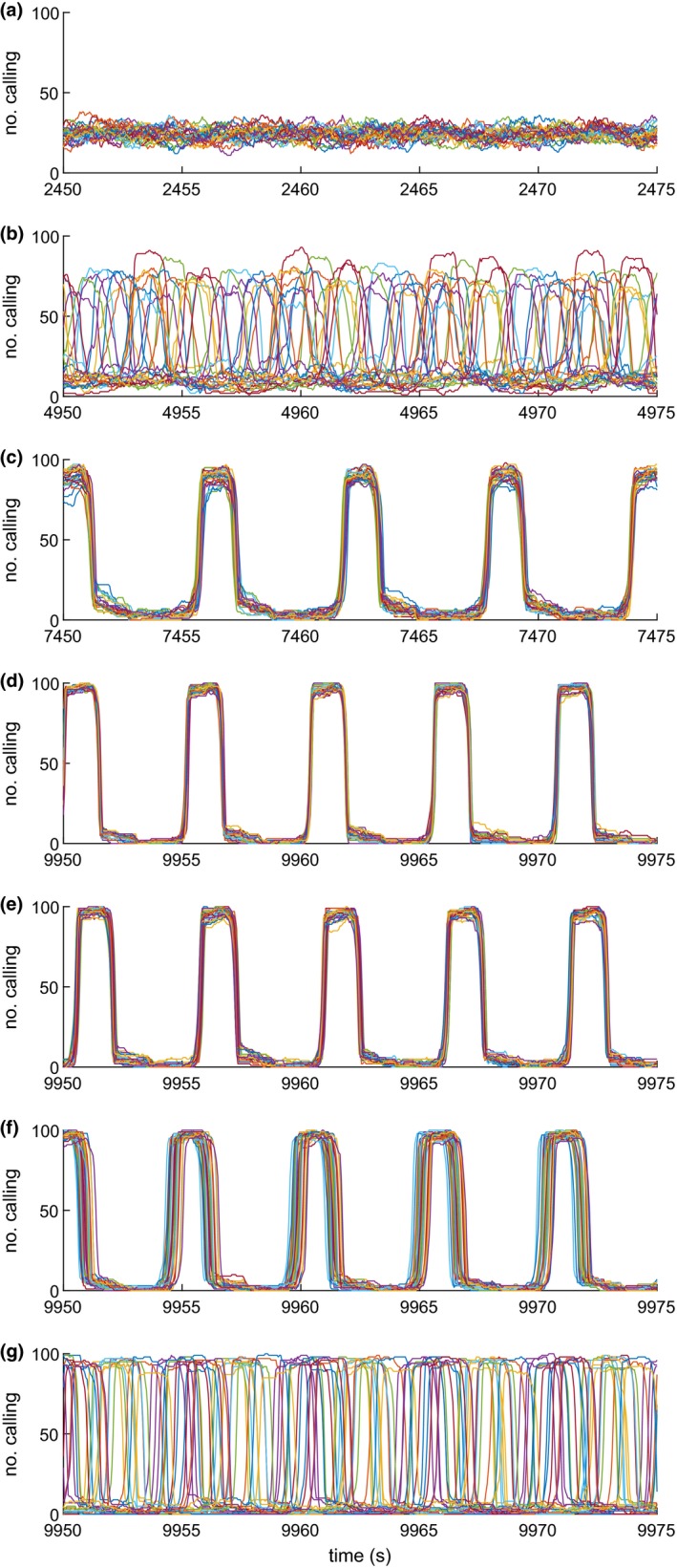FIGURE 4.

Segments of data from example simulations showing temporal variation in number of cicadas calling in each of 25 trees. (a) Cicadas cannot hear each other's calls, resulting in no synchrony. (b) Cicadas can hear calls from their own tree, but not calls from other trees, resulting in tree‐level synchrony. (c) Cicadas can hear calls from their own tree and other trees, resulting in forest‐level synchrony. (d) Cicadas can hear calls from their own tree and other trees, and individual rate of calling is increased, resulting in faster and larger volume cycles and increased synchrony. (e) Final segment of alternate simulation 1: cicadas can hear only from their own tree and adjacent trees, still resulting in forest‐level synchrony. (f) Final segment of alternate simulation 2: cicadas hear from other trees with a sound delay consistent with our test site, still resulting in forest‐level synchrony. (g) Final segment of alternate simulation 3: cicadas hear from other trees with a ten times greater sound delay, resulting in no synchrony
